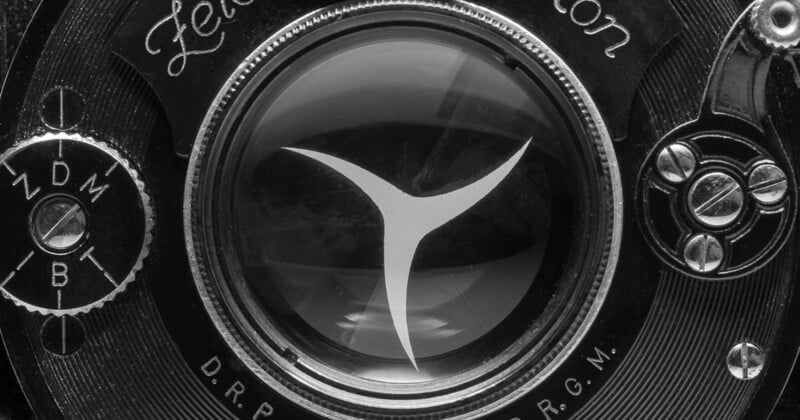
To take a photograph is to encapsulate a singular moment in time and space in the form of an image. In order to do that, no matter what kind of equipment we are using, we need a sort of tool to divide the past and future from the singular present, the precise moment that we wish to capture – no matter how long or how fleeting it might be.
That, in simple words, is the job of your camera shutter. Shutters come in many shapes and sizes, and the way shutters are built has changed quite a lot over the years. Today, let’s take a look at the diversity behind this ubiquitous and essential photography tool. In particular, let’s try to discover how different types of shutters can have an impact on how you take photos.
Table of Contents
Basics of Camera Shutter Operation
Let’s familiarize ourselves with how a camera shutter works by looking at one of the simplest possible designs, once a mainstay of amateur cameras for many years.
The shutter’s job is to block light from traveling through the lens all the way to the exposure medium – whether that is a glass plate, a roll of film, or an image sensor. When the photographer wishes to take an exposure, the shutter has to open and allow that light to enter at that moment, but only at that moment. Keeping the shutter open indefinitely is of course not an option, as we would just end up with a blank white exposure!
Enter the guillotine shutter. Behind that macabre name lies one of the most ancient mechanical shutter mechanisms. Before the guillotine shutter, photographers of the 1800s used to simply attach and then selectively remove a cap from the front lens element to determine how much light ended up in the exposure. Alternatively, some antique lenses came with a light-sealing plate that swung in and out of position either manually or remotely by means of a lever.
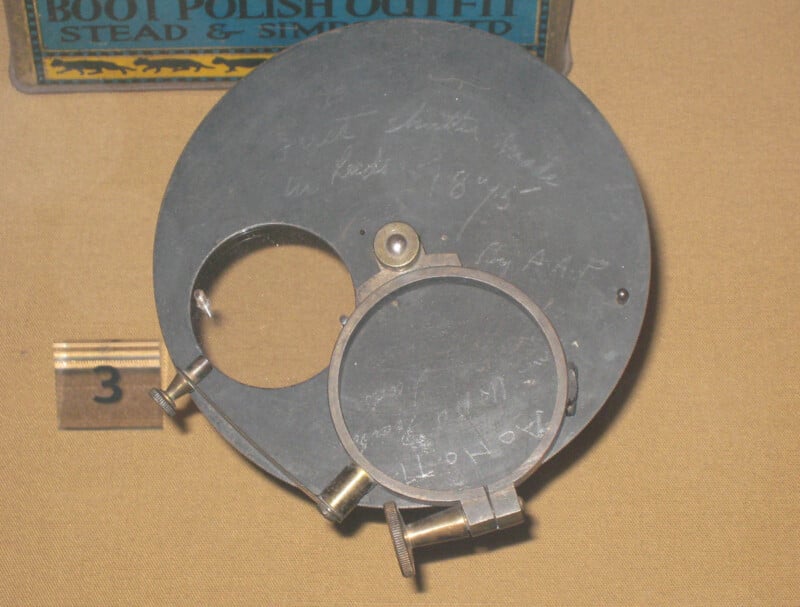
The guillotine shutter was one of the first and simplest means of governing exposure time more reliably, mechanically, and from within the camera.
The principles behind it are very straightforward. The shutter consists of a large plate into which a small hole is stamped. The plate is suspended so that it sits above the film plane.
When the shutter is engaged, the plate is released (usually by a simple spring or latch mechanism) and falls with gravity through (or in front of) the lens barrel.
The time that the hole in the shutter plate spends in front of the focal plane is the exposure time. To get ready for another exposure, the shutter has to be manually reset by raising the plate again.
An obvious downside of this simple camera shutter is its limitation to one speed – that governed by gravity, which depending on the exact design tends to be somewhere in the region of 1/5th to 1/60th of a second. Later guillotine shutters improved on that flaw by moving the plate horizontally by means of springs, which gave timing a higher measure of consistency.
Back in the day, these limitations made such shutters optional extras for photographers who desired “instant” exposures. When going for a longer shutter speed (which, with the very slow plates and film of the time, was a necessity very often), the shutter was usually easily disconnected and the old lens cap method was used instead.
At a certain point, more advanced guillotine-type shutters began emerging which used not one, but two plates, one trailing horizontally after the other. By exposing the narrow moving slit in between those plates, you could not just achieve higher top speeds. By varying the width of the slit itself mechanically, these shutters were some of the first to offer the ability to select between different exposure times.

However, these early experiments would soon be overtaken by a new design in shutter technology that is much more versatile and more familiar to us photographers today.
Advanced, Modern Shutter Designs
The bulk of the shutter technologies that have remained standard to this day emerged around the turn of the 20th century as improvements to prior, primitive attempts like the guillotine shutter.
The principal concern of designers during that time was to provide the ability to vary the exposure time before engaging the shutter and to do so in a way that would not affect reliability or precision too severely.
Of these, one of the oldest – the leaf shutter – would also go on to become one of the most influential and widely used.
Making the Leaf Shutter
A leaf shutter works differently from a guillotine type by incorporating a group of moving parts in a sort of ring around the inner walls of the lens barrel.
In the earliest form of leaf shutters, this consisted of one rotating pivot, called the leaf due to its shape, actuated by one or a series of springs, all of which are attached to a large circular plate with a cutout for light to travel through.
When the shutter is tripped, the leaf pivots and swings out of the way, momentarily allowing light to pass through the cutout. By tension of the springs, it swings back as soon as the exposure time elapses and a catch releases the leaf to travel back to its resting position.
Initially, this mechanism did not provide the option of manipulating shutter speeds. Instead, the main advantages of leaf shutters were precision and a theoretically higher top speed than what was possible with guillotine shutters.
However, soon enough, camera makers began to toy with the concept of the leaf shutter and enhance it by the installation of additional leaves. First two, then three, soon five, six, and even higher leaf counts began appearing in cameras throughout the 20th century.
The Modern Leaf Shutter
With the use of multiple blades, the shutter works quite differently. Each blade is mounted on the outside of the circular plate and is triggered by a mechanism usually consisting of gears, levers, and springs to open and close in perfect sync with all the other blades.
In doing so, they form a sort of artificial second aperture, which can look almost perfectly circular in designs with a high number of blades. This is why some also refer to these designs as ‘iris shutters’.
By manipulating the tension of the springs and engaging or disengaging some clockwork, the inherent delay in the mechanism can be adjusted. Hence, it’s pretty easy to make a leaf shutter with highly variable shutter speeds.
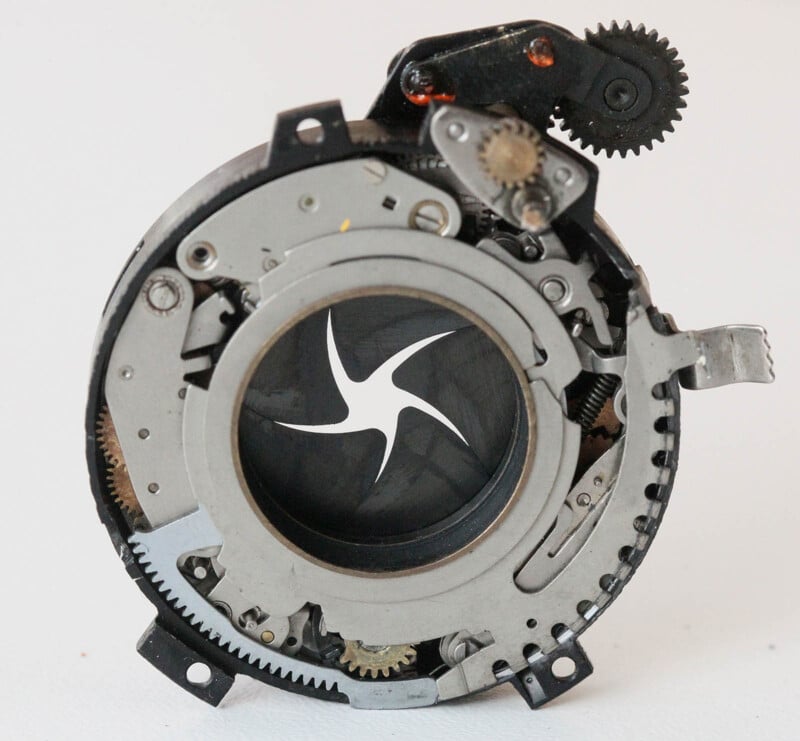
Advantages of Leaf Shutters
Leaf shutters remained the predominant shutter design for over half a century, spanning some of the most important periods of modern photography. That’s no coincidence: they present plenty of advantages over earlier and contemporary designs, and some would even argue that today’s shutters still have a thing or two to learn from them.
1. Reliability and Simplicity
For one, leaf shutters are mechanically both highly reliable and easy to manufacture. That’s a winning combination that allowed even high-end shutters to be incorporated into relatively budget-friendly cameras back in the day. Big names like Compur, Copal, and SVS-Prontor did not only grace the lens barrels of Rolleiflexes but also much humbler gear from the same time period.
2. Speed and Flexibility
Leaf shutters can offer a dizzying number of selectable speeds. Usually, the ‘fast’ speeds of a leaf shutter run from 1/60th of a second upwards, whereas all slower speeds are governed by a secondary timing mechanism attached to the main geartrain that only engages when those slower speeds are selected to keep the blades open for longer.
This is why budget-friendly leaf shutters of the old school would sometimes not go below 1/60 plus bulb. It’s also why slow shutter speeds below 1/60 on almost all leaf shutters produce that characteristic ‘buzzing’ sound!
Those that did include both fast and slow speeds, however, could offer the whole gamut, with as many as eight different speeds or more common on most leaf-shuttered cameras by the mid-20th century. Sit that next to the single-speed shutters of only a generation prior!
Compared to those old pioneers, leaf shutters can also go much faster. Conventional designs generally top out at 1/500th of a second (blazing fast for their time), but there have been some leaf shutters that dared venture beyond, including Kodak’s shutter for the Chevron in the 1950s, which went up to 1/750th, as well as the legendary Minolta V2, which wowed the press with a record-setting top speed of 1/2000 in 1958. That record was only broken by another Minolta, the V3, hardly two years later with its equally impressive 1/3000th of a second top speed.
3. Noise and Vibration-Free Operation
Leaf shutters also offer advantages in efficiency and usability that go far beyond the speed at which they can shoot. For example, because the blades are all situated in a circular fashion along the circumference of the inner lens barrel, the opening and closing action of the mechanism is perfectly balanced. Each shutter blade essentially has a ‘neighbor’ to dampen and cancel out the vibrations caused by its movement when it opens and closes.
This is why leaf shutters are renowned by countless photographers for their ability to take blur-free images handheld. It is indeed very possible to break the ‘one over focal length’ rule when wielding a compact camera with a leaf shutter and maintaining optimal posture, sometimes by a few whole stops!
For the same reason – the unique layout of the mechanism – leaf shutters take up fairly little space. This allows them to be easily incorporated into very lightweight and compact cameras without the need for out-of-the-box engineering.
Due to the way the shutter opens and closes – in a circular fashion, with all blades in unison, and opening up to the taking aperture fully before closing back the same way – leaf shutters also offer another advantage that, while practically unheard of at the time of their invention, has only become more and more important to photographers over the years: their miraculous ability to sync with flash guns at any of their available speeds.
That puts them far ahead of many more modern shutters in this particular regard, where even many of the best digital cameras today still struggle.
Another prime advantage that leaf shutters have over almost all other mechanical shutter designs is also one of their main claims to fame: silence. While not all leaf shutters are exactly quiet – the Seiko-made shutters for my Mamiya Press produce an intimidating metallic sound that reminds me of the harsh ‘clack’ of typewriter keys.
Many are genuine whispers though, and they can be so innocuous, small, and vibration-free that they make for the perfect candid street photography tool.
Indeed, street photographers have consistently flocked towards leaf-shuttered cameras for generations, even as the design has become less common. Today, one of the only cameras with a leaf shutter that you can still buy brand-new is the Fujifilm X100V.
Disadvantages of Leaf Shutters
It’s not all sunshine and rainbows, or leaf shutters would never have gotten any competition.
For all their strengths, leaf shutters also have some very glaring weaknesses. How significant these are depends, of course, on what kind of a photographer you are.
1. The Need for Speed
First of all, the aforementioned speed limitations are probably the greatest single reason that led to the abandonment of the leaf shutter in favor of other technologies over the course of the 60s and 70s.
While some have indeed tried to break the 1/500 barrier with some measure of success, they took great sacrifices in order to do so.
For example, the Minolta V-twins, which remain some of the very few cameras with leaf shutters to reach far beyond 1/1000th of a second, only achieved these record-setting numbers through some dirty tricks. As I hinted at above, the origin of one of the leaf shutter’s primary advantages – flash sync at every speed – has to do with the fact that the shutter opens and closes symmetrically, with the blades moving all the way out as they open, staying open for a determined amount of time, and then closing fully in the same way.
In order to make a leaf shutter that shoots more briskly than ever, Minolta concluded that you simply couldn’t make the blades go any faster. You’d just have to cut their travel distance instead. Hence, when you select any of the super-fast speeds on a Minolta V2 or V3, the shutter only opens and closes partially. The mechanism actually angles the blades to close and open more quickly, essentially by making them overlap slightly.
This was great news for those brave engineers chasing the dream of a high-speed leaf shutter, with all the advantages that come with it. Unfortunately, it also meant a leaf shutter that requires the photographer to dial in a smaller aperture at faster speeds. Due to that aforementioned overlap, the amount of light let through the lens is physically limited at the top speeds.
Ultimately, this became the reason why the masses never flocked to the capable little Minoltas. Using super-fast shutters is tricky enough in ambient lighting (and especially with the low-ISO films of the 60s), but doing so with a handicapped lens that can only open up to f/8 felt too harsh for most shooters. Today, the Fujifilm X100 series is a rare example of a digital camera employing a similar leaf shutter design that is capable of shooting at up to 1/4000, but with the same limitation – above 1/500, your available lens openings get smaller and smaller.
In plain English, this means that most conventional leaf shutters won’t let you shoot any faster than 1/500. For everyday photography, and even including some action and fast-moving subjects, that’s still plenty. But we’re spoiled nowadays with our hyper-fast DSLRs and mirrorless cameras, and especially for professional purposes, those kinds of top speeds simply don’t cut it anymore.
2. The Pitfalls of Central Shutter Designs
Apart from the issue of speeds, there is also the issue of construction. Leaf shutters are almost always central shutters at the same time. That is to say, they are built into the body of the lens, hiding inside the barrel somewhere in between the aperture blades and the front element.
As I mentioned previously, this is great for miniaturization. However, it also means that interchangeable lens cameras need a shutter for every lens, greatly driving up manufacturing costs. Some tried to go around this by making a leaf shutter that sits at the focal plane, inside the camera body.
But this required its own complications, which mostly stem from the fact that leaf shutters occupy such a small area only by virtue of being thicker than most other designs. That thickness is exactly what makes them nearly impossible to put into a camera body that sits lightly in the hand.
To make matters worse, early experiments with adding leaf shutters to single-lens reflex (SLR) cameras in the 60s proved that the two designs don’t go hand-in-hand very easily at all. The thickness, which may interfere with the lens mount, coupled with the need to actuate the shutter in unison with the flipping reflex mirror, proved to be significant challenges that were much easier to solve using alternative designs.
In the end, it’s these issues of packaging that led to the proliferation of other shutter designs as interchangeable-lens SLRs became the camera of choice for most serious photographers starting in the late 20th century.
Enter the Focal-Plane Shutter
The one major design that upended the leaf shutter’s dominance in the photography world during the 20th century was the focal-plane shutter, which remains the default today.
Curiously, focal-plane shutters are barely newer in design than the leaf shutter. The earliest examples were featured on press cameras like the Graflex Speed Graphic in the 1910s and 20s. One very early type, called the rouleau shutter, was even employed on the Goerz-Anschütz in the year 1894!
However, issues of reliability and ease of use kept the focal plane shutter from truly becoming a serious contender until much later.
In order to understand why that is, we need to first understand how a focal-plane shutter works. Let’s take a look!
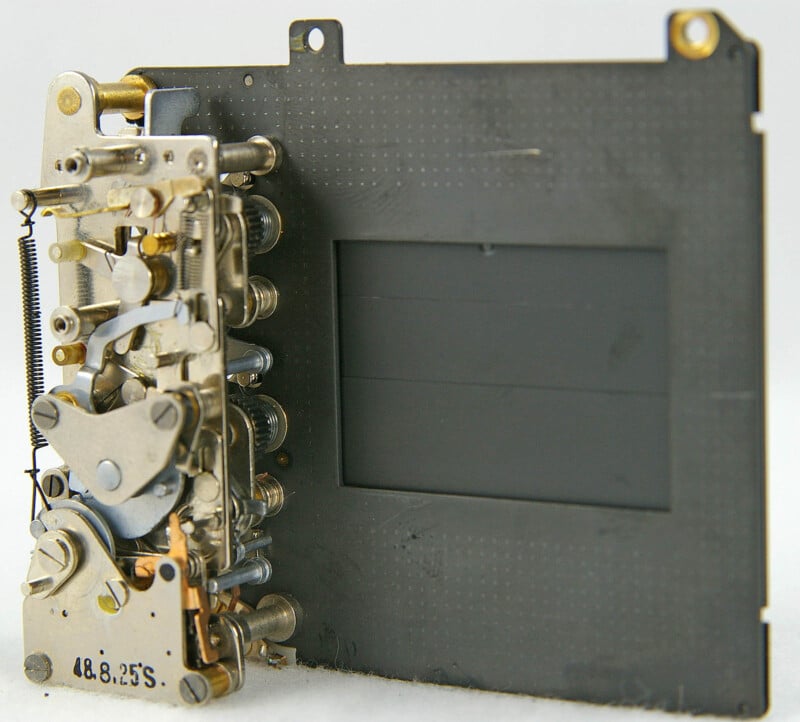
Principles of Focal-Plane Rolling-Blind Shutters
First of all, it’s important to get a distinction out of the way. So-called focal-plane shutters are a bit of a misnomer, as ‘focal-plane’ only describes the location of the shutter, not its design. As I mentioned above, some manufacturers attempted to install a leaf shutter deep in the camera body, just ahead of the focal plane.
However, those experimental designs are totally different from what we nowadays identify as a ‘focal-plane shutter’, which, to be more precise, is a focal-plane rolling-blind shutter.
In such a design, the shutter consists of a pair of two curtains. These curtains travel very quickly over the image frame, leaving a small gap between them. That gap is the exposure area, and both the speed of the curtains and the size of the gap can be varied to ultimately fine-tune the exposure time.
For very slow speeds, the second curtain can be configured to run with a delay. That is, the first curtain moves out of the way to expose the film or image sensor, and as soon as the exposure time has elapsed, the second curtain comes in to ‘close’ the exposure.
In essence, this is an evolution of the two-plate guillotine shutter design that was common towards the end of the 19th century, and indeed, this is the time period out of which the modern focal-plane rolling-blind shutter grew.
Earlier versions, such as those of the Graflex Speed Graphic, were rather cumbersome to use, which limited their appeal. Instead of setting speeds on a dial, Graflex shooters had to memorize a complex system of slit widths and spring tension grades, which in combination with each other generate various useful shutter speeds.
The focal-plane shutter mechanism that became the de facto standard for much of the 20th century is that of the original Leica camera. In the Leica, two shutter curtains made of silk travel across the imaging area horizontally, meaning a thin vertical strip traveling from right to left forms the exposure area.
These two curtains both move fast enough to clear the whole frame in 1/60th of a second. At speeds slower than this, a delay mechanism would keep the second curtain out of the way for the additional exposure time necessary.
At speeds faster than 1/60, the speed of the curtains remains constant, but the gap between them is mechanically reduced. This lowers the amount of light while at the same time increasing the apparent rate at which the vertical slit travels across the frame, due to its smaller area.
Since the Leica, adjustments to the initial design appeared over time. Nikon was one of the first to construct a focal-plane rolling-blind shutter with metal, specifically titanium curtains, both lightweight and strong. This fixed a consistent issue with earlier designs where pointing the camera at a strong light source while composing could, over time, burn small holes into the closed shutter curtains.
Even later still, during the 1970s and 80s, vertically-traveling metal shutter curtains became the norm. These have the capability of providing even faster speeds than their horizontally-guided ancestors as the vertical distance of the film gate (24mm on full-frame) is smaller than the horizontal distance (36mm).

Advantages of the Focal-Plane Rolling-Blind Shutter
Compared to the leaf shutter, the focal-plane rolling-blind shutter has a few tricks up its sleeve that make it more suitable in a variety of different shooting situations. On the other hand, most of these advantages also come with some definitive tradeoffs. Let’s take a look at all the reasons to use a focal-plane shutter over other shutter types right below.
1. Mechanical Reliability
The simple nature of the rolling-blind shutter, which was relatively straightforward to manufacture compared to multi-speed leaf shutters of the same time period, proved to make it incredibly reliable and serviceable in the field.
Out of all mechanical shutter designs, focal-plane shutters, especially those with metal curtains, are among the most long-lived and robust. Compared to many leaf shutters, disassembly and manual repair may be more challenging, but on the other hand, most rolling-blind shutters have far lower regular maintenance needs and will keep on working even in challenging environments and after heavy use.
2. Speed and Fast Action
The main draw of the focal-plane rolling-blind shutter is its ability to provide extremely fast speeds at no direct cost to the photographer. Where super-high-speed leaf shutters often come with a lot of compromises, as in the case of the Minolta V-cameras, focal-plane rolling-blind shutters can be made to fire at up to 1/8000 or even faster in some cases!
This makes the rolling-blind shutter the instrument of choice for action photographers and all those who need to freeze fast subjects in motion reliably and without skimping on image quality.
3. Easy Packaging for Modern Camera Designs
The rise of the interchangeable-lens SLR as the predominant camera type for both professionals and amateurs correlated perfectly with the proliferation of roller-blind shutters, and that’s no coincidence.
The reliance on thin curtains and few moving parts makes it much easier to incorporate such a shutter right at the focal plane, which helps free up space where it is most necessary – around the mirror box and the lens mount. Shutter components can easily be spread out to improve efficiency instead of being constricted to a circular mounting pattern as with leaf shutters.
In film cameras, horizontal rolling-blind shutters often traveled from right to left during exposure because film was wound from left to right. This meant that the actual film winding mechanism could be easily connected to the shutter cocking and winding system, creating a two-in-one solution that was easily actuated by a cocking lever on the top plate.
This was an advantage compared to many earlier leaf-shutter cameras, where it was often necessary to cock the shutter by a trigger on the lens barrel after winding the film separately.
To be fair though, simultaneous shutter cocking and winding was never impossible on cameras with leaf shutters; it was just more complex to implement. By the 1970s, many, if not most leaf-shuttered cameras did include this highly desirable feature anyway. And of course, digital cameras are not restricted by this at all (hence the wide range of vertical roller-blind shutters in DSLRs and mirrorless cameras nowadays).
4. Flexibility and Lens Choice
Apart from some mid-century experiments, almost all leaf shutters are also central shutters, where the shutter assembly forms part of the lens barrel. By contrast, practically all rolling-blind shutters are focal-plane shutters, mounted very close to the film plane or digital sensor inside the camera body.
Coupled with their space efficiency as described above, this makes the focal-plane shutter much less of a headache for designers of interchangeable-lens camera systems, especially SLRs but also rangefinders, for example.
Not having to account for a thick, circular shutter assembly, lenses can be made shorter and lighter, and also more cheaply. After all, glass is a lot simpler to engineer than glass and intricate clockwork in the same package.
This means that camera systems based on a focal-plane shutter usually offer a far more diverse and affordable choice of different lenses, which also happen to be easier to handle. A win-win!
Disadvantages of Focal-Plane Roller-Blind Shutters
While the roller-blind shutter has become the go-to default for most photographers, to the point where it is even sometimes referred to as the ‘standard mechanical shutter’, it’s not without flaws.
In fact, the roller-blind design introduces a series of compromises and disadvantages that are not present in most competing alternatives, including especially the leaf shutter.
1. Speed or Sync?
It turns out that even the roller-blind shutter’s greatest trump card, its capacity for record-breaking speeds, comes with a caveat.
Namely, shutters of this type cannot sync with flashes at all of their speeds. In fact, flash sync is heavily restricted on such designs due to an inherent limitation in how they operate.
As you recall, the focal-plane roller-blind shutter works by the movement of two curtains that trail one another, creating a narrow slit of light during the exposure.
This means that, during a high-speed exposure, at no point is the entire image area illuminated evenly. Instead, the shutter ‘uncovers’ the image only piece by piece. This is crucial because it makes synchronizing a flash to fire with the shutter extremely tricky.
During the early days of focal-plane shutter SLRs, the fastest you could fire with synchronized flash was 1/60, as that is the fastest speed (in a Leica-type shutter, at least) where the two curtains stay far enough apart to expose the entire frame evenly for a short moment.
Later developments, including vertically-traveling shutter curtains, have softened this limitation somewhat. High-quality focal-plane DSLRs and mirrorless cameras usually offer flash sync at up to 1/125 or 1/250 nowadays.
Still, that is a severe limitation compared to the freedom you have in flash photography with leaf shutters, which can sync with flash at any speed provided by the fact that the shutter blades always open and close fully.
2. The Rolling Shutter Effect
Rolling-blind shutters and similar designs also suffer from an inherent optical flaw that is usually called the rolling shutter effect. This, again, is a side-effect of not exposing the image area evenly at high speeds.
When photographing a moving subject using a focal-plane shutter, especially at its fastest setting, the right and left (or, in a vertical shutter, top and bottom) ends of the frame will be literally exposed at different moments in time.
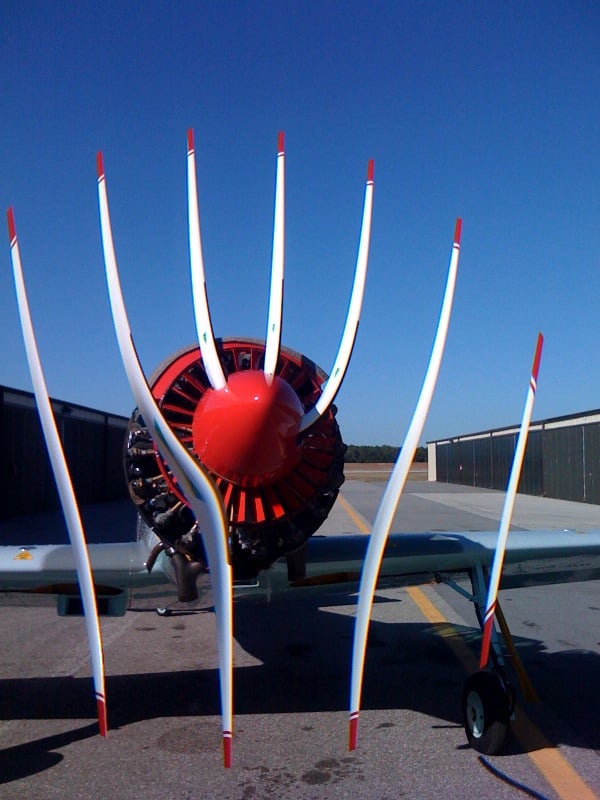
The results are anomalies that I am sure you have seen before, in old-time footage of automobile races, for example: egg-shaped wheels, cars that seem to slant in a comical way, as if they’re being blown by the wind, and generally surreal proportions.
Back in the day, this was the result of the focal-plane shutter employed in the Graflex Speed Graphic and other similar press cameras of their day.
As the Graflex was a 4×5 large format camera, we are talking about a very big shutter mechanism with genuinely huge curtains. This is why, in fast-action scenes and sports photography of the mid-20th century taken with these kinds of cameras, the distortion effect is particularly grave. The distance that the curtains need to travel is simply gigantic compared to what happens inside a full-frame or crop-sensor digital camera today.
However, that is not to say that the rolling shutter effect is a thing of the past. Any camera with a focal-plane rolling-blind shutter does still exhibit this effect at high speeds. And where today’s cameras come with much more miniaturized shutter curtains, they make up for it in their ludicrously high top speeds: The Graflex Speed Graphic only went up to 1/1000, but the Nikon Z7 reaches a maximum of 1/8000. The higher the speed, the worse the distortion.
3. Noise and Vibration
Though some have tried (Leica being arguably the most lauded example), making a quiet and smooth focal-plane shutter with rolling curtains is an almost impossible task. Compared to the silent and internally balanced design of the leaf shutter, the rolling-blind shutter suffers due to the fact that its main moving parts – the curtains – only travel one way during exposure, and then back the other way while preparing for the next.
This means that, especially in a camera with a motorized winding system, the amount of noise and vibration instantly gives a focal-plane shutter away. Of course, in an SLR camera, other sources such as the swinging mirror also contribute to the high sound profile.
But even without those elements, as modern mirrorless cameras prove, there’s hardly any escaping that characteristic ‘crunch’ noise as you trip the shutter release.
For wildlife, street, and candid photographers of every stripe, this is a serious disadvantage as it can easily lead to startling the subject and missing the shot.
But the high volume and vibrations that occur inside a rolling-blind shutter also have practical implications even for those who have no interest in going incognito.
When shooting handheld, the natural instability of the focal-plane shutter makes it much harder to get blur-free exposures at slower shutter speeds than with a leaf shutter. Of course, the higher speed range of the focal-plane shutter might make up for this in the minds of some – but remember that those speeds may not always work in every kind of light!
Stabilization, then, has become a much bigger issue with focal-plane rolling-blind shutters than it used to be before they were common. This is why high-tech IBIS (in-body image stabilization) and lens stabilization and vibration reduction systems have become such a hot-dollar item in digital photography in recent years.
The Best of Both Worlds: What You Need to Know About Electronic Shutters
For the longest time, photographers only really had the choice between leaf, roller-blind, and some more obscure, less common mechanical shutter options.
In recent years though, an entirely new category has opened up, namely electronic shutters. These are not to be confused with electronically-timed or electronically-actuated mechanical shutters, which have been the norm since the 1980s.
Rather, electronic shutters work exclusively on digital cameras (particularly mirrorless digital cameras) and operate without any moving parts. The ‘shutter’ action happens entirely within the circuitry.
This is made possible thanks to advanced imaging sensors, which can selectively turn themselves on and off by manipulating the flow of electricity – thereby controlling exposure and emulating the function of a physical shutter.
This fundamental change is a revolutionary one and makes electronic shutters very different in real-life use from any of their mechanical counterparts. Let’s see what it is that you can expect when shooting with a camera equipped with such a shutter.
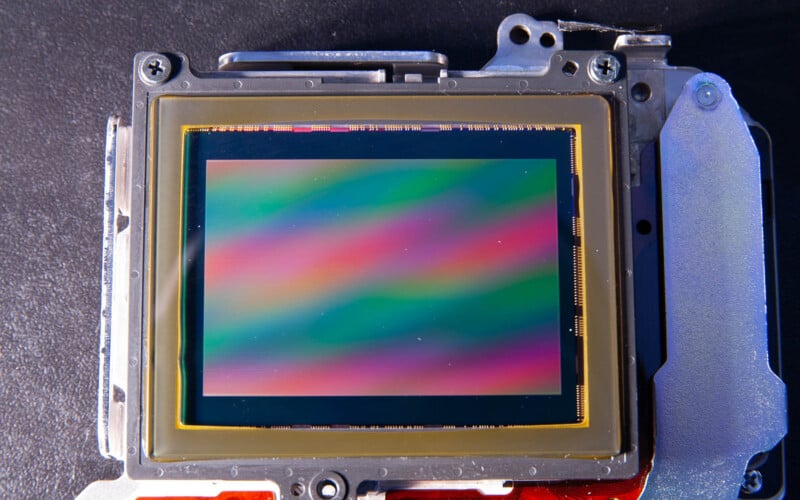
Advantages of Electronic Shutters
Electronic shutters offer numerous benefits and constitute the peak of current camera shutter technology. While highly regarded by some, they are also not without controversy. Let’s go over the most important key points worth knowing.
1. Silent and Fast
Electronic shutters manage to take the best of both focal-plane rolling-blind designs and leaf shutters by being both pin-drop quiet (thanks to the lack of moving parts) and blazing-fast at the same time.
Top-range electronic shutters, such as those used in the Nikon Z9, can shoot at up to 1/32000th of a second while also offering burst shooting and video capture at a staggering 120 frames per second.
2. Vibration-Free
Because they’re entirely contained within the circuitry of the image sensor, electronic shutters do not cause any noticeable vibrations when they’re fired. This makes it much easier to handhold the camera even at a slower shutter speed while still getting good results.
3. Lower Maintenance Needs
Though differences between individual designs do matter, a general rule to note is the reliability of any mechanism is bound to decrease with an increase in moving parts, all else being equal.
Because electronic shutters don’t have any moving parts whatsoever, they can cope with the fine tolerances their extreme performance requires much more easily than mechanical shutters. This makes them nearly maintenance-free – a huge bonus to those who use their cameras very heavily, in particular working professionals.
4. Instantaneous Shooting
Because the reaction time of an electronic shutter is determined entirely by electrical impulses and not by a complex interplay of springs, levers, and gears, there is practically no shutter delay. All mechanical shutters do experience a tiny delay – leaf shutters due to the time it takes for the blades to open, and focal-plane shutters due to the time it takes for the first curtain to pass across the imaging area.
However, electronic shutters completely avoid these limitations and offer, for the first time, the ability to expose an image precisely at the moment the photographer trips the release button.
Disadvantages of Electronic Shutters
It wouldn’t be the world we live in if all these high points of electronic shutters didn’t come with some compromises and strings attached. As before, whether the pros outweigh the cons is up to you to judge – there isn’t and likely will never be a shutter type perfectly suited to every photographer!
1. The Rolling Shutter Returns
You would think that electronic shutters, lacking the moving physical curtains of their common focal-plane counterparts, would not exhibit any of their brethren’s optical flaws, such as the rolling shutter effect. Surprisingly, you’d be wrong – in fact, some say this flaw is an even worse problem for electronic shutters than it ever was for mechanical designs!
This is because of a fundamental limitation in how electronic shutters ‘read’ light data off the surface of the image sensor. Imagine your digital camera’s sensor as subdivided into countless sectors, each of which is akin to the photoreceptor cells inside your own eye.
When light hits these cells while they are powered by electricity, information about that light gets stored in the cell. All the exposure information of all cells put together makes for a complete photograph.
The problem is that CMOS sensors, by far the most widespread sensor technology on the market today, do not allow for the entire sensor to simply switch itself on and off again for the duration of the exposure. Instead, they use what’s called an electronic rolling shutter, where the sensor’s cells are grouped into lines, and each line is read in sequence at the moment of exposure.
This is the same technology that’s been used for many years to facilitate live view and ultra-small sensor photography in point-and-shoot cameras as well as smartphones. In electronic shutter cameras, it is simply applied on a larger scale.
This leads to very severe rolling shutter artifacts, often much worse than with any comparable mechanical shutter! Rolling shutter effects particularly show up at very high shutter speeds, distorting moving objects and rendering proportions askew.
There are sensor technologies that allow for a true global shutter – CCD sensors for instance, which are capable of reading out an entire exposure at once across the sensor’s surface. However, CCDs haven’t been in widespread use in digital cameras for over a decade, largely due to their much worse energy efficiency and low-light, high-ISO performance compared to CMOS.
2. Lack of Compatibility With Synchronized Flash
You would think that the super-high-speed capabilities of electronic shutters would make them ideal for fast-action and sports photographers, who generally desire the sharpest, most well-defined possible exposures of their hard-to-track subjects.
Actually, the opposite is true: the proliferation of electronic shutters over the past couple of years has met with lukewarm reactions from a large subsection of professional photographers.
This is largely due to one severe limitation of current-generation electronic shutters, namely their inability to synchronize with flash at most speeds. That’s right – despite their super-fast exposure times, the sequential nature of electronic exposure with CMOS sensors means that syncing to flash is a very tricky task when using an electronic shutter, even more so than with focal-plane mechanical shutters.
3. Banding and Other Image Flaws
Apart from the rolling shutter effect, there are also some distortions and optical flaws that are entirely unique to electronic shutters.
The most noticeable of these is banding, which especially occurs when shooting indoors under artificial lighting. You can generally notice banding as a sort of ‘flickering’ or zebra-stripe effect covering the whole frame.
Again, banding is a side-effect of the sequential readout that occurs when using a CMOS sensor. There isn’t really any way to fix banding in-camera once it occurs (except for switching to a mechanical shutter, which many, if not most models with an electronic shutter will let you do in the settings menu). Thankfully though, it does not occur very often in natural daylight, where most general photography takes place.
A Quick Overview of Some Lesser-Known Shutter Designs
While the above covers nearly every type of shutter you are likely to find in a consumer-grade camera nowadays, there are a few others that deserve mentioning, for the impact that they’ve had on current technology and for the small, but notable role some of them continue to play in certain photography niches.
The Rotary Shutter
The rotary shutter is a version of the focal-plane mechanical shutter that uses a single, large blade instead of two curtains. This blade is shaped like a semicircle and rotates freely around a pivot, thereby selectively blocking and uncovering the imaging area as it passes over it.
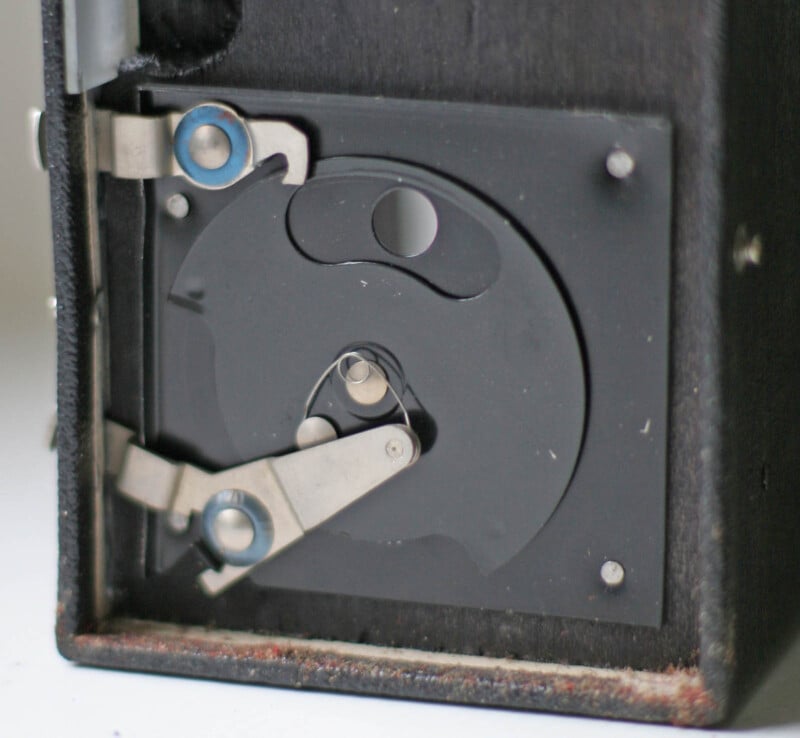
The rotary shutter has mostly been used in movie cameras as the default focal-plane shutter for decades. It has also been used on the seminal Olympus PEN F half-frame SLR, one of Olympus’ first great success stories from the 1960s.
The advantages of the rotary shutter are equivalent to those of focal-plane shutters in general, but compared side-by-side with the rolling-blind type, the rotary shutter is generally more reliable, as its main moving components are much simpler. It can also be made to fire more quietly and with reduced vibrations due to the rotary principle inherent in the design.
Finally, because the rotating blade necessarily leaves the entire image field exposed as it moves, no matter at what speed it’s traveling, rotary shutters can sync with flash at all speeds.
However, the main reason why the rotary shutter has not made it big in the world of consumer photographic cameras is that its circular shape makes it extremely bulky.
Worse still, the size that a rotary shutter needs to be for its blade to clear the whole imaging area is greatly proportional to the size of the image sensor or film format. Meaning, bigger cameras require ever bigger shutters, to the point where integrating one into a full-frame body, let alone a medium-format camera, is practically impossible.
This is why half-frame cameras and cinema cameras shooting small formats such as 8mm and 16mm form the main use case of such shutters.
Electronic Front-Curtain Shutter (EFCS)
Many modern mirrorless cameras with an electronic shutter offer a so-called Electronic Front-Curtain Shutter, or EFCS for short.
This is an attempt to offset some of the weaknesses of conventional, CMOS-based electronic shutters while still benefiting from their inherent advantages over purely mechanical shutters.
An EFCS works by means of a single shutter curtain, which passes over the image sensor in the same way as the front curtain of a roller-blind shutter. After the first curtain, an electronic shutter takes over the function of the traditional rear curtain.
This aids in timing and precision, reducing many of the pitfalls of full electronic shutters, including rolling shutter distortions.
However, it also makes the EFCS slower than competing technologies. Most such shutters top out at about 1/2000. A respectable number for sure, but something that even traditional, fully mechanical shutters can easily surpass.
While louder than purely electronic shutters, EFCS systems do reduce noise to some extent compared to a mechanical shutter thanks to the absence of a physical rear curtain.
Image distortion is a similar story: middle-of-the-road performance, with fewer banding artifacts than what you’d get out of an electronic unit, but still worse than comparable fully mechanical alternatives.
This makes an EFCS a stopgap solution for those who find appeal in the strengths of electronic shutters but are not willing to fully adopt them yet given their current limitations. On almost all cameras featuring an EFCS, you will find it available as an optional feature selectable via in-camera menus.
Give it a try – you might find that you like the compromise it offers!

